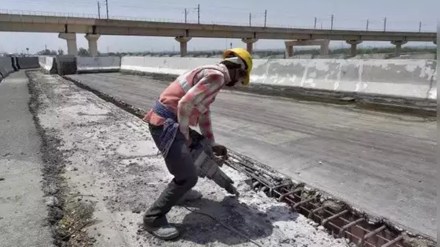The Commerce and Industry Ministry on Friday announced that the Ayodhya bypass project is designed to ensure uninterrupted freight flows and alleviate congestion in Ayodhya, playing a crucial role in regional development. The 67.57-Km bypass project in Uttar Pradesh has been strategically planned and executed as part of the PM GatiShakti initiative, aiming for enhanced connectivity and logistical efficiency.
Over the last two years, the Network Planning Group (NPG) has convened 64 meetings under the leadership of PM GatiShakti, focusing on the comprehensive area-based socio-economic development of more than 131 infrastructure projects. During the 52nd NPG meeting, the Ayodhya Bypass Project was identified as a critical infrastructure endeavor.
Ayodhya Bypass Project Overview
The Ayodhya Bypass Project spans 67.57 kilometers, comprising the construction of 4/6 Lane Northern Ayodhya Bypass (35.40 km) and 4/6 Lane Southern Ayodhya Bypass (32.172 km). This greenfield project will traverse key districts like Lucknow, Basti, and Gonda, enhancing connectivity to economic, social, and logistics nodes, including tourist and pilgrim sites across the region.
Addressing Economic Hubs and Congestion Challenges
Situated between Lucknow and Gorakhpur, Ayodhya serves as a crucial link for major commodities such as leather, engineering goods, building materials, iron, and steel. The Ayodhya Bypass aims to facilitate uninterrupted freight flows, alleviating congestion in the city and ensuring smoother transportation of goods.
Improving Connectivity to National Highways
Anticipating a significant increase in passenger and freight vehicle movement, the Ayodhya Bypass will cater to around eight influence areas around Ayodhya. This strategic project aims to reduce travel time to critical national highways, including NH-27, NH-330A, NH-330, and NH-135A.
Ayodhya Bypass Project: Multi-Modal Enhancement
The Ayodhya Bypass Project integrates with existing infrastructure, including Railway Stations (Ayodhya, Sohwal, A N Dev Nagar, Ayodhya Cantt) and Ayodhya Airport. This multi-modal approach is expected to streamline the movement of people and goods, fostering economic development in the region.
Synergies with Other Proposed Projects
The Ayodhya Bypass Project is envisioned to complement and synergize with other proposed projects evaluated in NPG meetings, including the Prayagraj – Raibareili Project, Gorakhpur-Siliguri Corridor, and Gorakhpur-Bareilly Corridor.
Ayodhya’s Overall Infrastructure Significance
Beyond its cultural and historical importance, Ayodhya plays a vital role in the overall development and connectivity of the surrounding areas. Recent developments, such as the Maharishi Valmiki International Airport and the redeveloped Ayodhya Dham Junction Railway Station, contribute to enhanced connectivity and regional economic development.
Key Highlights of Ayodhya Bypass Project:
Major Commodities That Will Pass Through the City:
- Manufacturing items (leather, textile, plastic & engineering goods) and building materil
- Perishable groceries such as fish, dairy, fruits/vegetables
- Oil, Gas, Iron, Steel & Wood
Efficiencies Unleashed by the Corridor:
5 Km Length Reduction: Facilitated by the peripheral connectivity offered by the network.
66.67% Travel Time Reduction: Journey time cut from 1.2 hours to a mere 0.4 hours.
250% Increment in Average Speed: Accelerating from 40 km/hr. to a swift 100 km/hr.
80 L. Person-Days of Employment Generation: Contributing to substantial job opportunities along the corridor.
Environmental Impact:
50 Lakhs Litre Fuel Reduction Annually: Attributed to the peripheral connectivity provided by the network.
1 Cr. Kg Annually Reduction in Carbon Footprints: Shifting from 40 km/hr. to 100 km/hr. results in a significant reduction.
20 Km Length – Use of Recyclable/Reusable Material in Construction: Emphasizing sustainable practices in the construction process.
